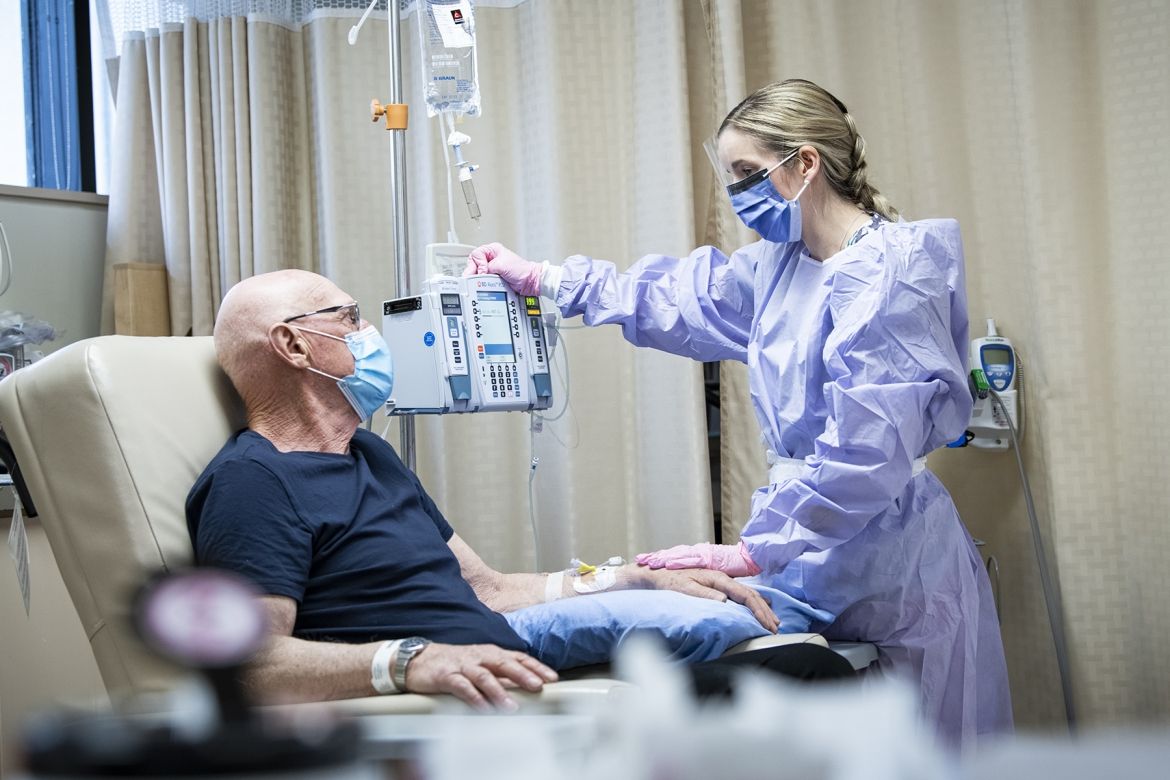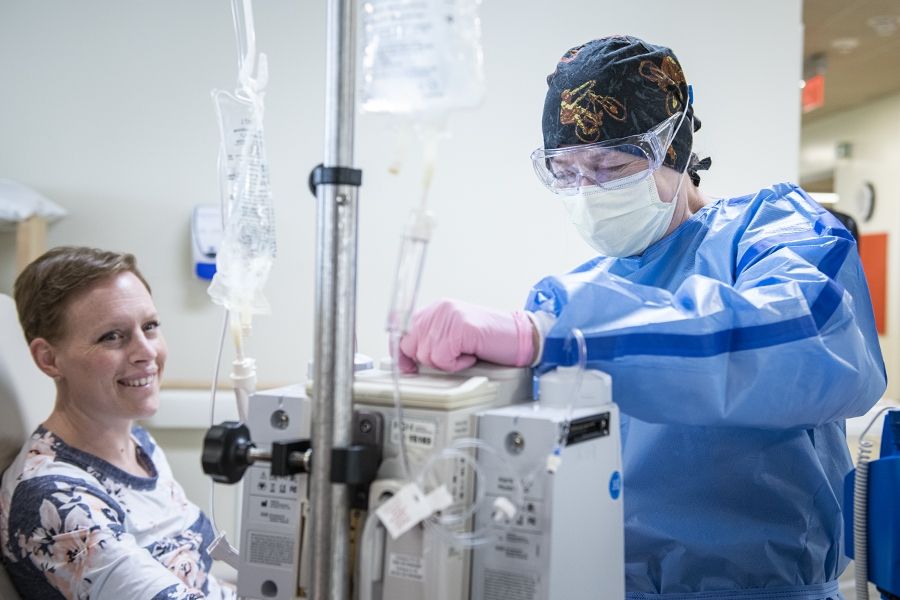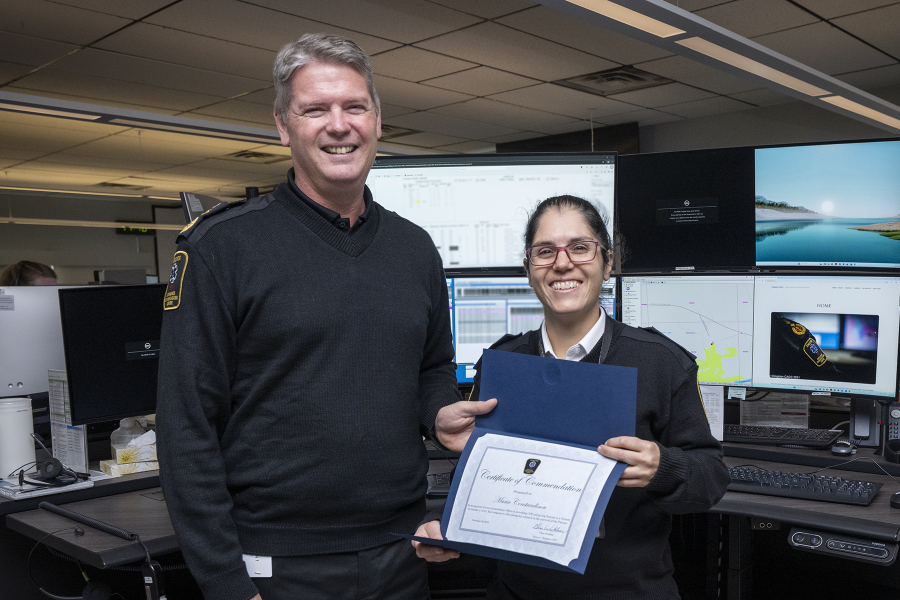Effective immediately masking is required for everyone when present on all inpatient units, in the Emergency Department (ED), the Urgent Care Centre (UCC), and the Children’s Outpatient Centre (COPC).
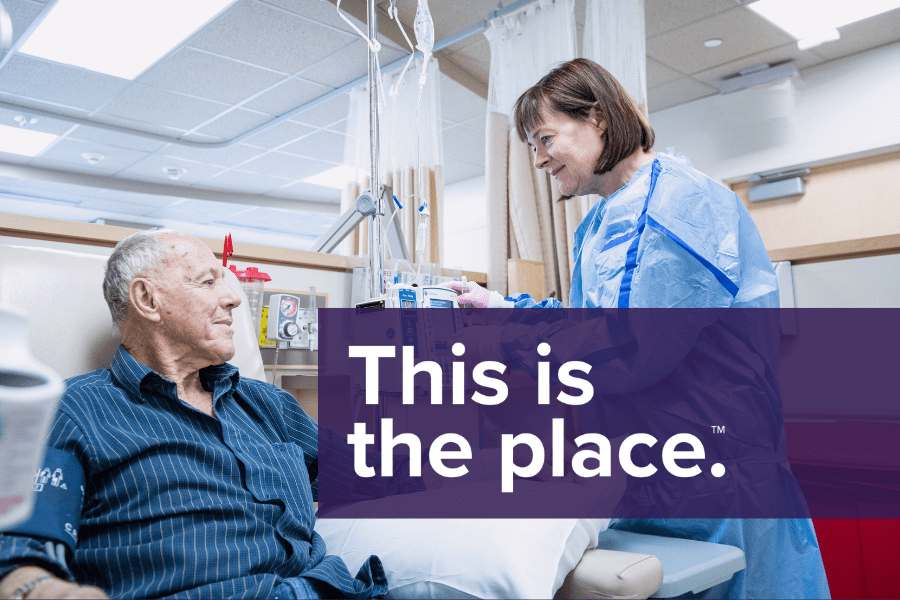
Cancer. The word itself is scary enough, but for many patients, the perception of treatment options like chemotherapy and their side effects can be frightening too. But here at Kingston Health Sciences Centre (KHSC), modern cancer treatment is evolving. We’re moving past ideas of “destroying cancer at all costs” towards a more comprehensive view of patient care.
The reality is that cancer treatment is complex, and the disease itself is misunderstood. Many diseases – heart disease for example - are chronic, incurable and life-threatening, but can be managed if caught early and treated effectively. But the way we talk about cancer and its treatment is different. It’s more nuanced. - Dr. Tara Baetz, oncologist with the southeast regional cancer program.
There are three main ways to treat cancer. They are surgery, radiation, or systemic treatment – which is a type of treatment (like chemotherapy) that uses a medication to target the cancer. A patient’s individual treatment plan could involve any combination of these types of treatment. . The world of systemic treatment is quickly changing. Every year new types of systemic treatments emerge, and the Southeast Regional Cancer Program at KHSC is on the leading edge.
Evolving treatment options
Cancer is caused by deviations in a cell that cause it to spreading and damage otherwise healthy parts of the body. Treatments target different mechanisms to disrupt cancer cells: some destroy the cells outright, others interrupt its ability to replicate.
The most common form of systemic treatment is chemotherapy. It’s been used for years to treat blood cancers – cancers without a solid mass or tumor– but has also become effective at treating solid cancers as well. It takes effect quickly, and is constantly being refined. Unfortunately, patients may not always tolerate the side effects.
Immunotherapy has recently emerged as another effective treatment option that supports the immune system’s own capacity to identify and destroy cancer cells.
The immune system has built in mechanisms to remove damaged cells, but cancer cells can avoid detection by masking their presence and manipulating “immune checkpoints” – molecules that limit an immune response. Immune checkpoint inhibitors are medications that remove these limits, making it easier for the immune system to target cancer cells. While there are certainly side effects to this sort of treatment, it leverages a body’s natural systems and is generally better tolerated than chemotherapy.
As many as 15-20 per cent of patients at the Southeast Regional Cancer program are now treated with immunotherapy, and that number is expected to grow.
The right course of action
When creating a treatment plan, clinicians need to consider the stage of the disease, its site, physiology and the patient’s preferences for care.
As soon as cancer is suspected, the clock starts ticking:
“The window during which you can make meaningful change through treatment can be narrow,” says Dr. Baetz. “Generally, the sooner a patient can start treatment, the better the outcome. Because of this, fast, accurate assessment is crucial.”
Because cancer cells can develop resistance over time, treatment needs to be calibrated to destroy cancer cells as quickly as possible, while balancing adverse effects to patients. Every treatment is individualized.
Immunotherapy may not work for a specific patient, or it might take longer to start working. Chemotherapy, could begin destroying cells almost immediately. Is it worth the side effects?
The answer depends and clinical staff, in partnership with the patient, need to balance the risks and benefits of any given approach. The most important factor in all of this is the patient’s preferences for care.
Care closer to home
Many systemic treatments need to be administered as part of a regimen that could require regular in-person clinic appointments. Depending on the treatment, appointments could even be daily, on a cycle that could last for several weeks. In these cases, KHSC works with partner “satellite” hospitals, as part of the Southeast Regional Cancer Program to reduce travel time for patients and bring care closer to home.
The program's goals are to provide equitable care closer to home by moving from the clinic to the community. One way the cancer program is doing this, is by exploring treatments that can be performed in an outpatient model, reducing time spent in hospital. Another way is to provide systemic treatments that can be ingested orally and taken at home, such as venetoclax – a relatively new drug that’s being introduced regionally.
Many of these approaches emerged to meet challenges with hospital capacity, but have become innovative ways of supporting diverse patient needs during treatment.
Building capacity for care
Accurate, timely information is critical to providing effective treatment, and it’s where the regional approach shines. Diagnostic Assessment Programs (DAPs) are shared pathways between partner hospitals that coordinate the process from cancer suspicion to diagnosis. It coordinates referrals, laboratory testing, diagnostic imaging and procedures and multidisciplinary clinics for treatment decisions. DAPs help to leverage the specialized equipment and services at KHSC for patients across the region.
KHSC has specific diagnostic pathways for cancer sites, but it’s also one of a few places in Ontario to have an accelerated diagnostic assessment program (ADAP). This pathway focuses on getting from referral to diagnosis quickly – usually within four weeks – and is used when the window for treatment may be especially narrow.
As the centre of the “hub and spoke” regional model, KHSC also supports other sites by setting professional practice standards and providing logistical support. The oncology pharmacy at KHSC develops, produces and distributes over 4000 chemotherapy treatments annually that are then provided at satellite sites.
The pharmacy team also facilitates cutting-edge treatment options in the safest way possible. For example, “bispecific T cell engagers” are a novel treatment, now available for treating various cancers in Ontario. They can provide an additional line of treatment for patients, but often require close patient monitoring.
Before the first patient was treated with bispecific T cell engagers at KHSC, the pharmacy team secured the medication, developed treatment guidelines for managing adverse events, updated the hospital's drug formulary to ensure prompt and adequate supply of rescue medication and educated pharmacists involved the patient’s treatment.
It takes a whole team to support a patient through their cancer diagnosis, from the medical clerks scheduling clinic appointments, to the drivers delivering chemotherapy drugs to satellite clinics. Cancer care is team care and everyone works together to put the patient first.
Understanding the care trajectory
Through diagnosis, clinicians can understand the expected course of the disease and, by working with patients, they can understand the desired goals and outcomes.
If the disease is caught early or if it’s a type of cancer that responds well to various therapies, the treatment intent is “curative” – to eliminate the cancer entirely. If the disease has progressed too far or is resistant, treatment intent is “palliative” with the goal to reduce symptoms and improve quality of life. In a palliative context, treatment can still be effective in extending life expectancies so patients have the time to focus on what matters most to them.
Lucas Mott, program manager for systemic treatment recognizes the importance of this kind of care, even when curative intent isn’t possible:
Think about it as the ability to extend life. Given the realities of your prognosis, what kind of life do you want and how do you want to live it? We give people precious time to determine their priorities and make it count.
The goal is to support patients, not just during treatment, but to the end of life. It’s something that hasn’t always been recognized, but is perhaps the most important aspect of treatment.
The future of cancer care
Due to an aging population in Ontario, it’s projected that the number of people living with cancer will continue to rise in Ontario, but improvements in detection and treatment mean better patient outcomes.
The rapid, successful change in cancer treatments over the past five years alone has been remarkable. With timely diagnosis and treatment, many cancers that used to be life-ending are now chronic, or even curable. It becomes something you live with and manage, instead of something you die of. - Dr. Baetz.
Gallery
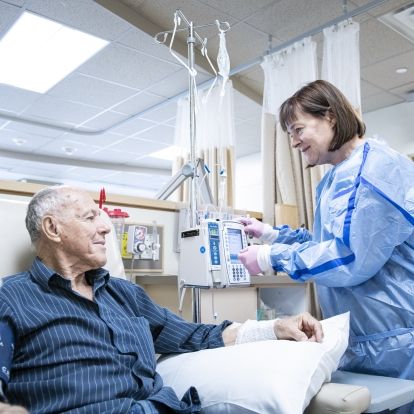
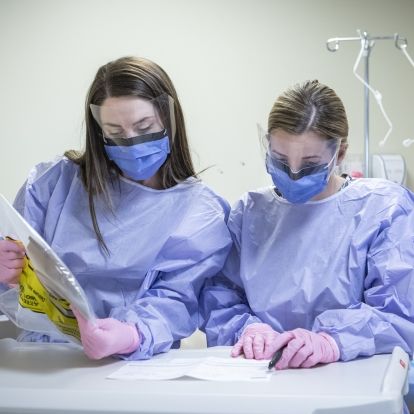
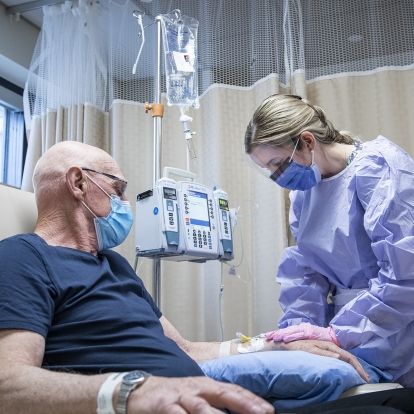

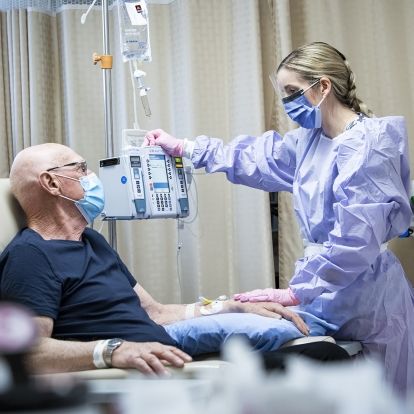
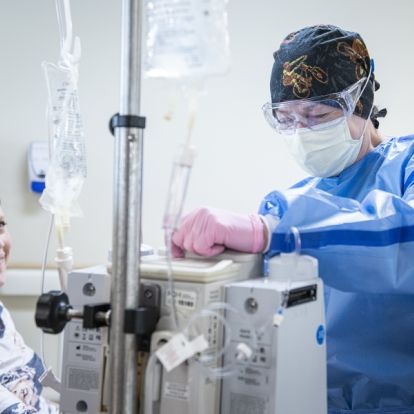
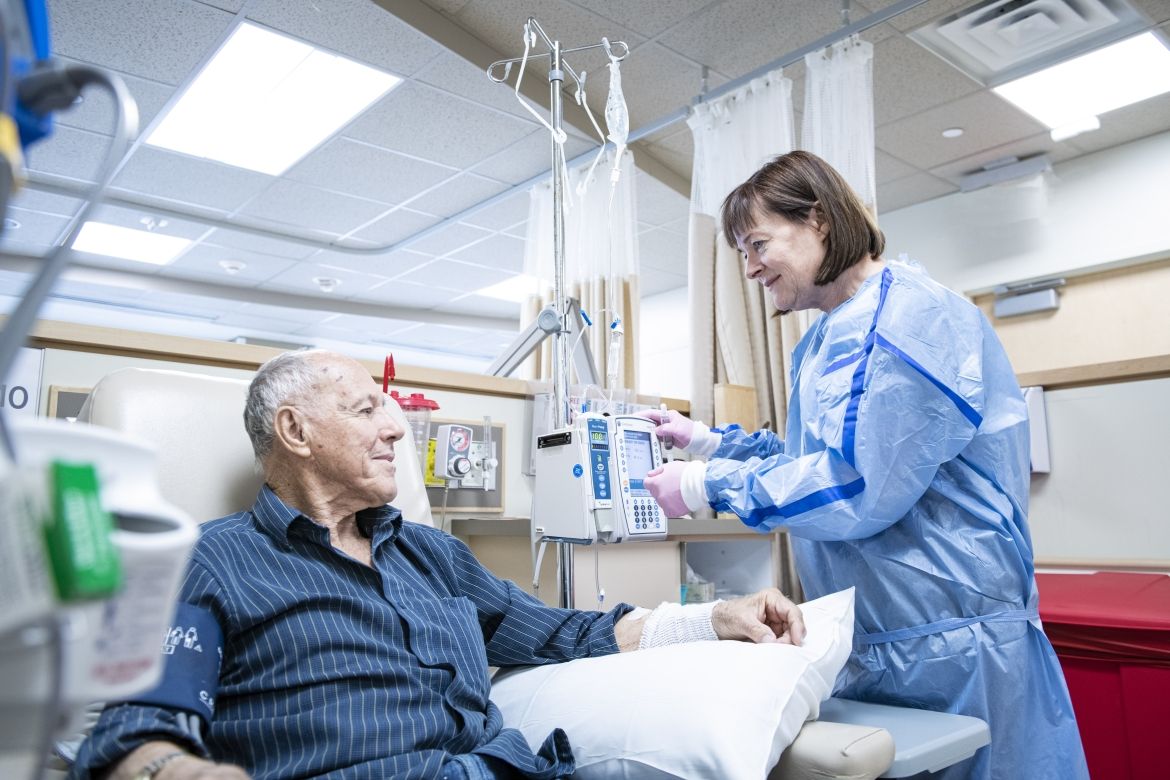
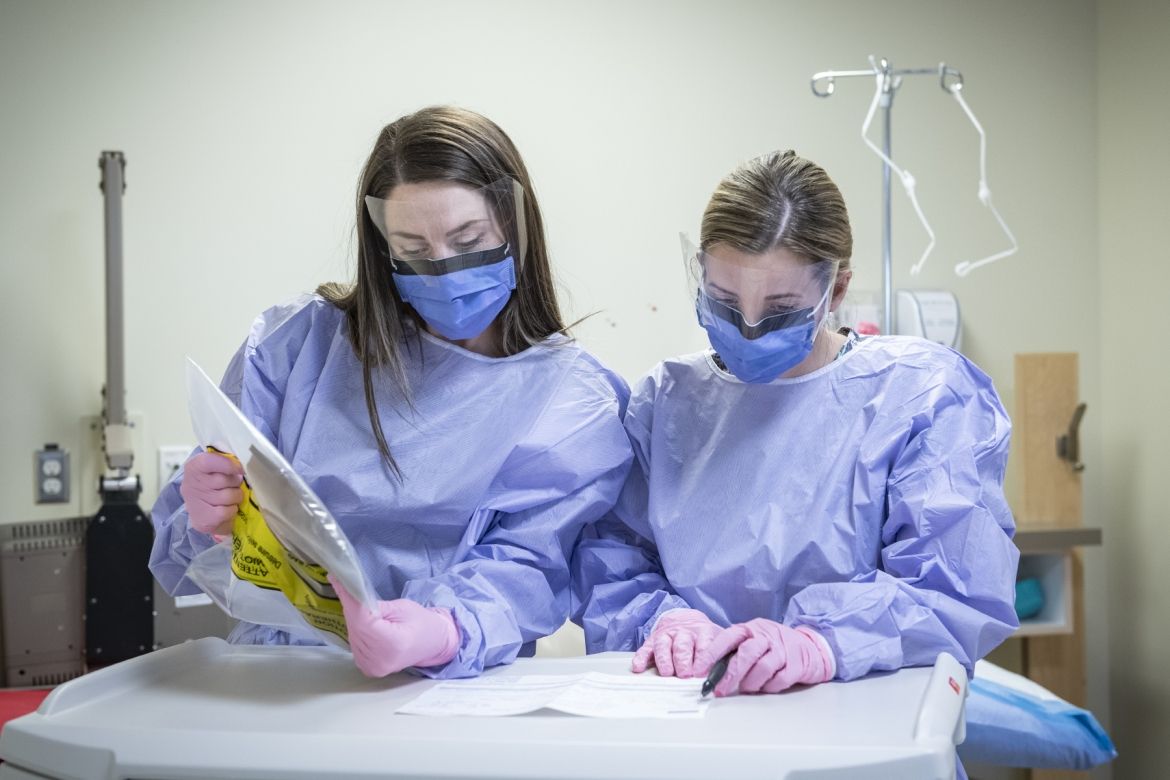
Cancer centre staff examine medication.
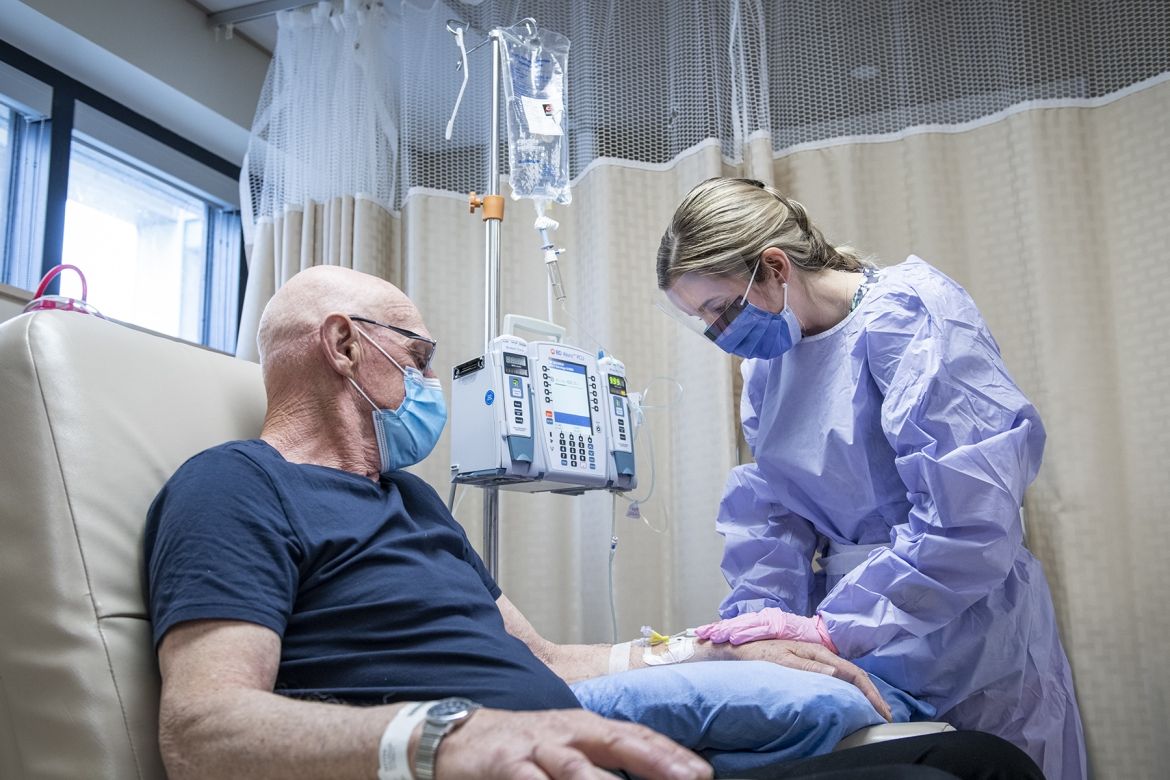
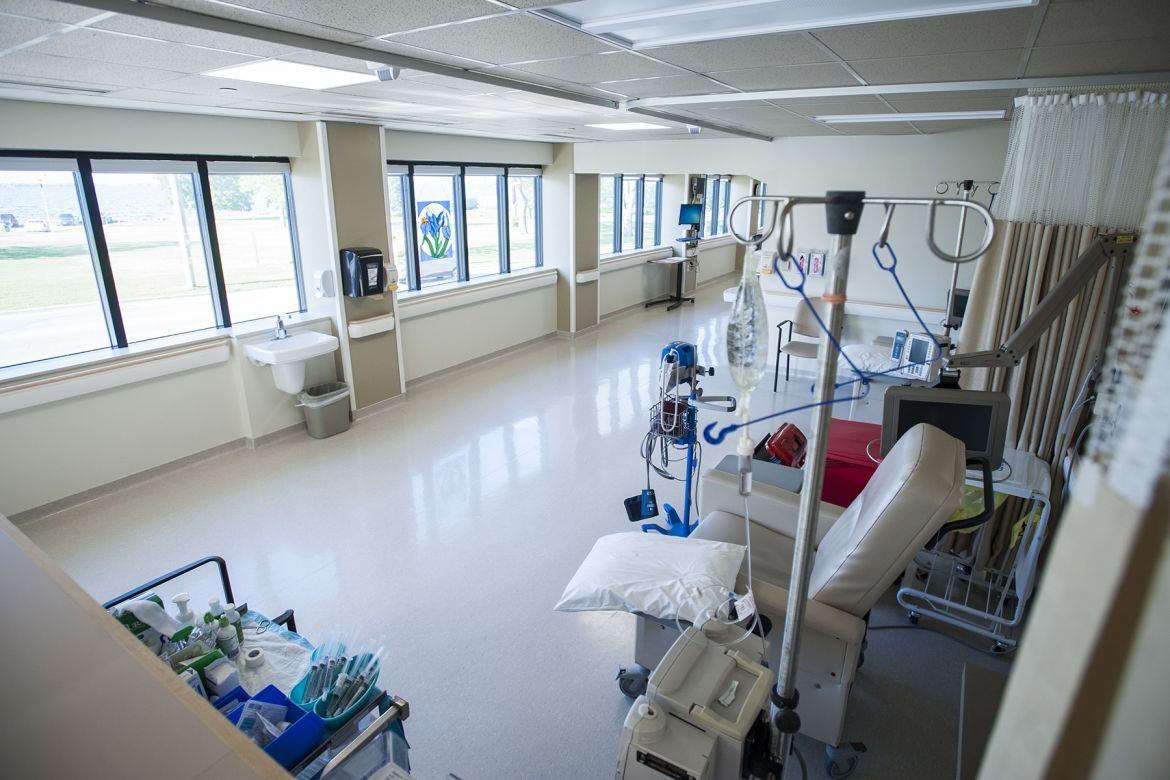
One of the cancer treatment areas at KGH, overlooking Lake Ontario.
